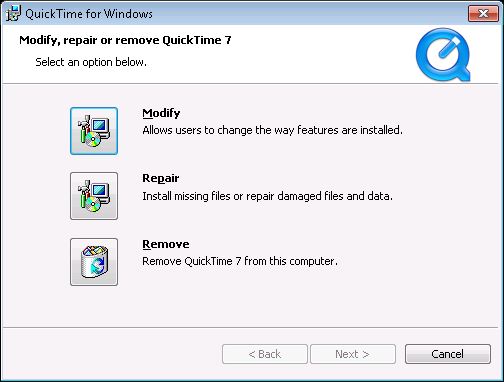[ Print Version ] [ Print Version ] [ Back to the User Guide ] [ Back to the User Guide ]
Variations Audio Timeliner Version 1.0.1 Installation Instructions
for Windows
Prerequisites
Hardware:
- Pentium II 500MHz, 256MB RAM (512MB preferred), 2GB hard drive or better, 16-bit audio, 1024x768 resolution
Software:
- Windows 2000, XP, or Vista
- QuickTime 7.0 or higher
Step 1: Make sure Quicktime for Java is installed - Apple no longer installs it by default, but Variations will not work without it.
- Go to the QuickTime installer download page.
- Download the QuickTime 7 installer and open it.
- Start the Quicktime 7 Installation
-
From the setup types, select custom:

If Quicktime is already installed, select modify:
- Under Legacy QuickTime Features, click the icon to the left of "QuickTime for Java" and select "Will be installed on local hard drive". It should look like this:

- Finish the installation.
Step 2: Install Variations Audio Timeliner -
- Download Variations Audio Timeliner to your desktop.
- When the file finishes downloading, open it to begin the installation.
- Click through the installer, reading any notices before agreeing to them.
- When you are finished installing, open the Sample Timelines folder the installer placed on your desktop. Double-click the sample timeline (Chopin_Nocturne_op27no2.v2t) in that folder to start the application and display the sample timeline. Click on the play button to listen to the audio.
Problems?
- If you experience other problems when you try to run Variations Audio Timeliner, check the following link for possible solutions: Known Problems.
Fonts
We strongly recommend that you install the font
Arial Unicode MS in order to be able to view all international and
special characters in the application. This font can be installed as part of the
"international features" option in Microsoft Office 2000 or XP. You can easily check to
see whether this font is already installed by opening Microsoft Word and looking at the
list of fonts. For more information on installing this font, see Microsoft
Knowledge Base article Q287247.